If you want to make electronic music away from your computer, using a hardware sequencer, a drum machine, some synths and samplers maybe, one thing you’ll need is some kind of mixer.
You’ll plug all your audio sources into the mixer, and use the mixer to balance their levels, also to route certain inputs to effects possibly (look for the phrasing “insert points” or “send/return”), maybe to do some EQing, and possibly to make adjustments “on the fly” as you’re jamming or recording.
Read this next: Getting Started Making Electronic Music Without A Computer
You may also use the mixer to send what you are doing to a recording device, which may well be a computer. (Yes, doing so isn’t strictly DAW-less, but it’s convenient, especially if your approach is a “hybrid” one, where you get ideas down, jam, and produce a performance away from the computer, but then move all of your work into a DAW for final polish and outputting.)
So really, a “mixer” could do any of these tasks (only the first is a given):
- Mix your sources
- Interface with a computer
- Send your sources to effects (either on-board or external)
- Record your mix
Obviously the combination of the above that is important to you will immediately help you to narrow your options, but there are other things to consider, too.
Contents
- Mackie ProFX10v3
- Mackie Mix12FX
- Allen & Heath ZEDi-8
- Yamaha MG10XU
- Soundcraft Signature 10
- Yamaha AG06
- Presonus StudioLive AR8c
- Tascam Model 12
- Behringer Xenyx 802
- Zoom Livetrak L-12
- 1010music Bluebox
Things to bear in mind when choosing a DAW-less mixer
What you choose will depend upon what combination of these things you want from your mixer, and to what degree. For instance, you may not care about being able to feed the output into a computer, you may be happy with a simple stereo send to a computer, or you may want to send all channels (which would be more useful for further work later).
If you buy a mixer that is also a recorder, again, you may want it to record all inputs individually, or be happy for it just to record a stereo “master”. Or, you may choose to do the recording on another device entirely (hardware recorder, even a phone plus audio interface), meaning this isn’t an important consideration for your mixer.
And you may be governed by available space, or trying to avoid any unneeded features. If your DAW-less music set-up is in a small space, a big mixer may be too much for you – and such mixers are often made for people who need lots of microphone inputs and other features that add to their weight, size and price, and that aren’t necessary for mixing electronic sources.

That said, you will want to make sure that you’ve got enough channels. If you have, say, two mono synths, a stereo sampler, and a stereo synth, that’s six inputs – but what if you then want to add a microphone, or another synth or two? Best to always have spare capacity.
You’ll want to check that all the channels can accept what you want to feed into them, too – no point having several microphone-only or guitar channels if all you want to attach are line-level instruments.
And finally, remember that many people get into making music away from a computer because they don’t want to be making music with a mouse and keyboard, or at least, with limited, generic control surfaces. They want knobs, buttons, faders and lots of them!
Prefer to make music with a computer? Get the course: Dance Music Formula
Therefore, the kind of mixer you get will depend upon how much control you want or need. and how “immediate” that control is. Some mixers are fiddly or aren’t really designed for hands-on performing with, so be sure you think about that. (As a DJ, I like to be able to quickly tweak my mix, so for me, good “hands on” control is important.)
As long as you bear these things in mind, you should find you soon hone in on a mixer or two that would be right for you. Then it’s just a case of availability, and cost.
Happy hunting; here’s our list of suggestions to get you started. Feel free to share your ideas and ask questions in the comments.
Mixers for Hardware-Based Home Studios
Mackie ProFX10v3
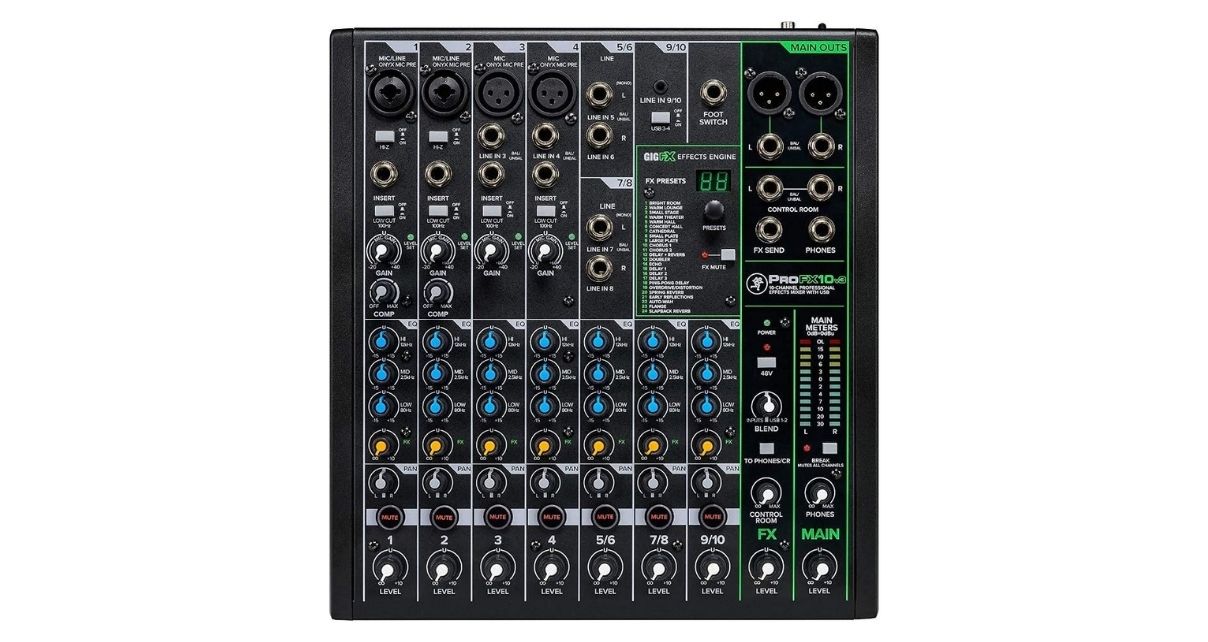
There are several mixers in this mid-priced “pro” range from Mackie, and we’ve gone for the 10-channel version with built-in effects, although there are versions from six to thirty channels.
For a home mixer this is medium-sized, and each mixer channel has comprehensive inputs and controls – maybe too many for an electronic producer, as no fewer than eight of the channels have mic inputs and decent mic pre-amps, all of which which you’re paying for of course. But the EQ and panning is excellent, there are decent built-in effects, and it has a basic audio interface for recording direct to a computer, too.
Channels – 10
On-board FX – Yes
External FX send – Yes
Audio interface – Yes
On-board recording – No
Launched – 2019
Price – $249/£219/€331
Also see: ProFX12v3
Mackie Mix12FX
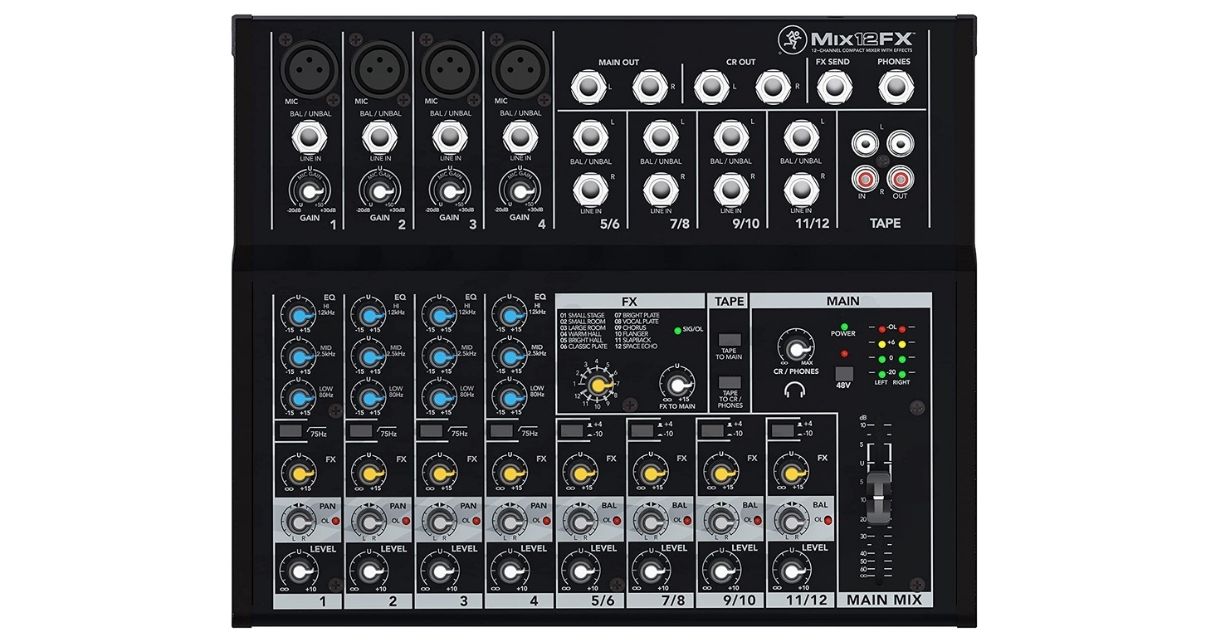
The Mix12FX is a budget mixer that nonetheless has a range of features that will appeal to DAW-less musicians. Its four mono mic/line channels have three-band EQ and pan, it has four stereo channels too, and all channels have pan and FX send to a basic set of in-built FX.
There’s no built-in audio interface, but there is a record (“tape”) in/out and separate headphones socket. Note that you get rotary volume controls instead of faders.
Channels – 12
On-board FX – Yes
External FX send – No
Audio interface – No
On-board recording – No
Launched – 2014
Price – $129/£102/€149
Also see: Mix5, Mix8
Allen & Heath ZEDi-8
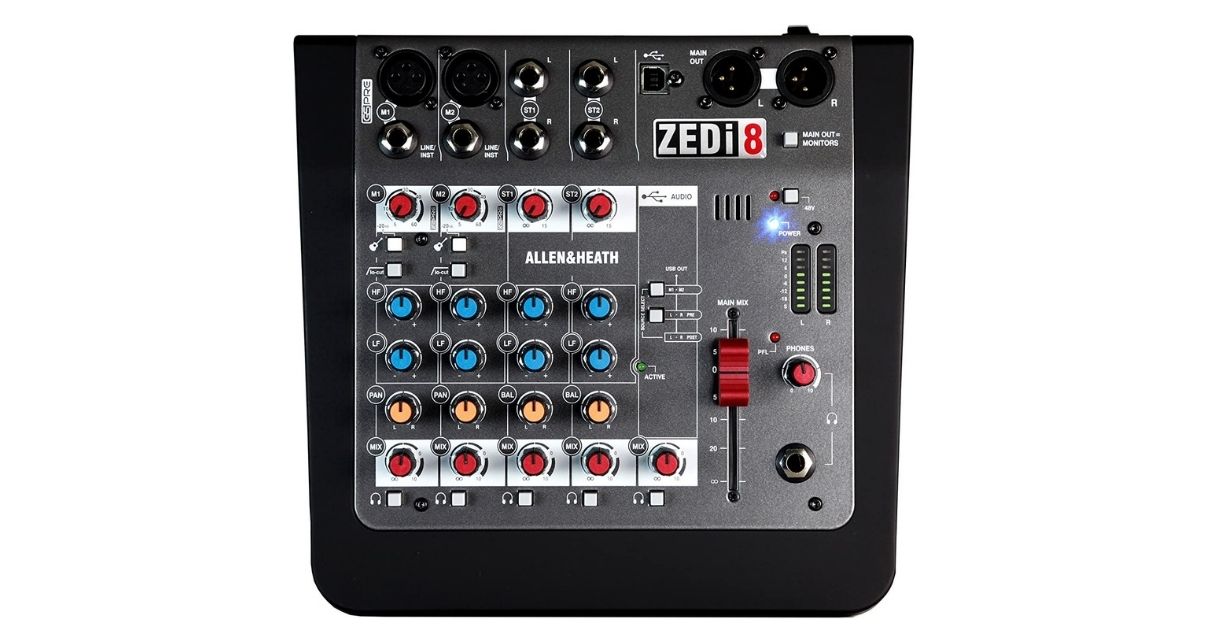
A simple, rugged, small mixer, the ZEDi-8 features two mono mic/line channels and two stereo channels, all with two-band EQ and pan, and rotary volume controls. There are headphone cue buttons for all inputs, and a simple two-channel audio interface for attaching to a computer.
The main advantages here are Allen & Heath quality at an affordable price, and the small size, making this a good choice for a small DAW-less set-up for playing live, for instance.
Channels – 8
On-board FX – No
External FX send – No
Audio interface – Yes
On-board recording – No
Launched – 2012
Price – $189/£139/€169
Also see: ZED6, ZED-6FX, ZEDi-10, ZEDi-10FX
Yamaha MG10XU
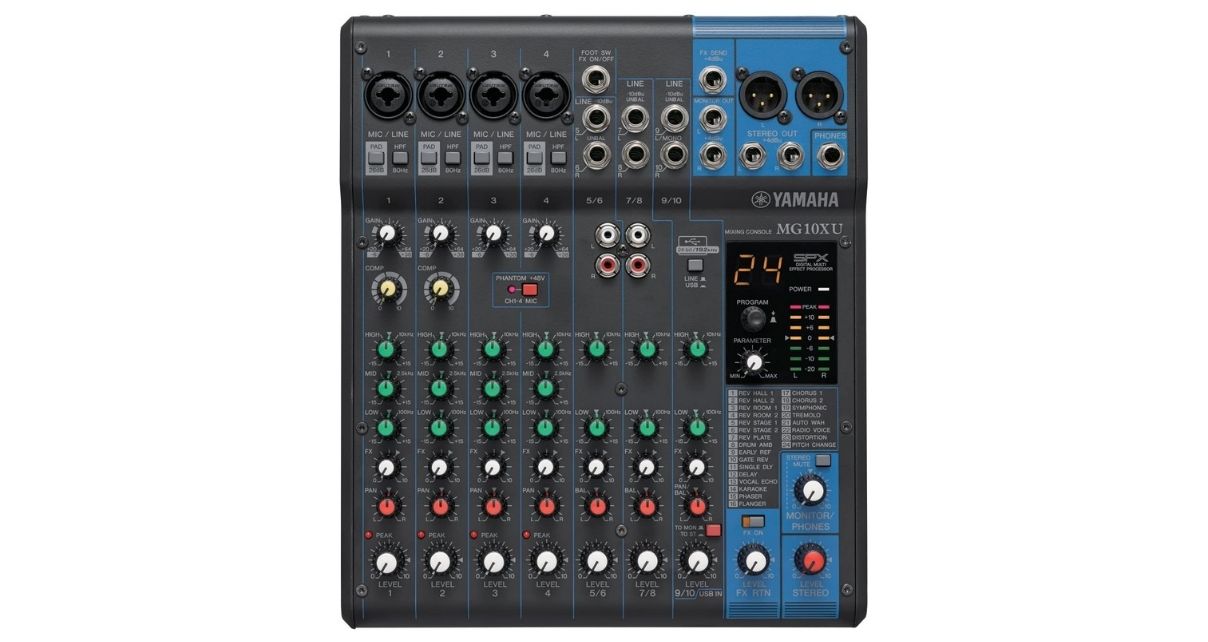
A great value mixer that is reasonably compact yet offers four fully featured mono mic/line channels with three-band EQ (two with individual compression – nice!), three stereo channels with two-band EQ, on-board FX, and a basic audio interface.
Definitely worth comparing to, for instance, the Mackie ProFX10v3, and it has a feature set that may well appeal more to you, at a lower price. You only get rotary volume controls, but often that is a decision based upon desk space as much as anything else, and may be an advantage to you.
Channels – 10
On-board FX – Yes
External FX send – Yes
Audio interface – Yes
On-board recording – No
Launched – 2014
Price – $219/£193/€228
Also see: MG12XU
Read this next: 7 Things To Consider When Setting Up A First Home Music Studio
Soundcraft Signature 10
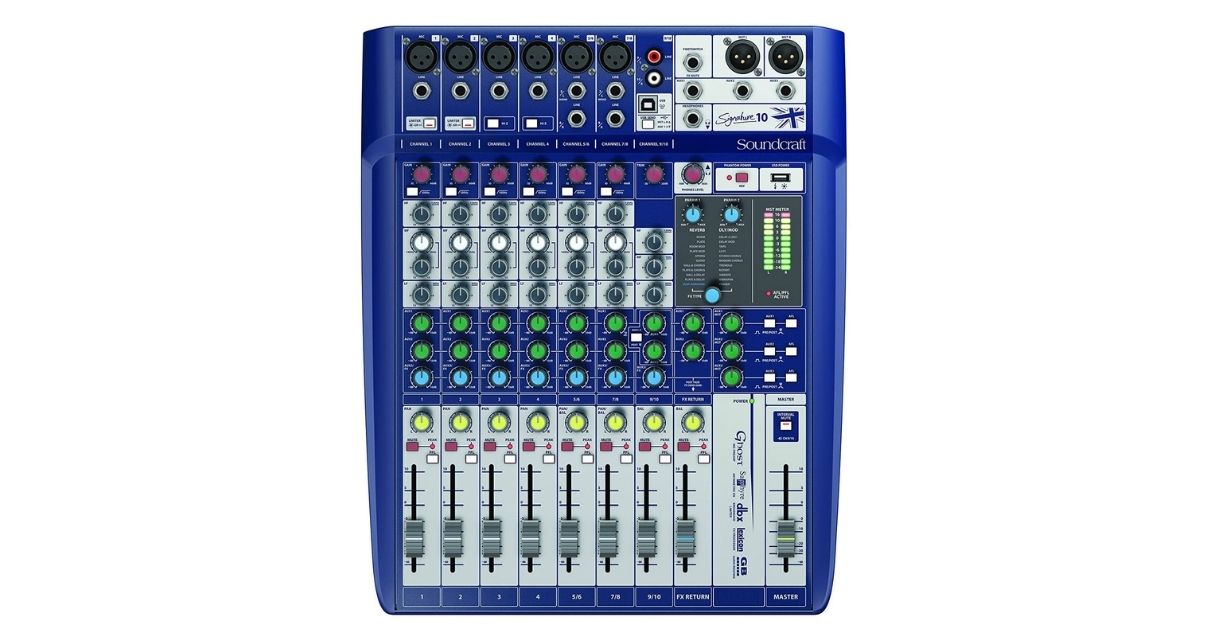
A compact yet well-featured mixer, offering faders rather than rotaries for the volume controls, and a sweepable mid-EQ for more precise EQing than standard three-band EQ. Their aux sends for FX is generous at this price point, too, and the built-in FX are good.
Part of a range that has “MTK” variants, which bring you audio interfaces that let you input each channel separately into your computer – useful if you want to jam live, but have the option to record then work on each individual stem in a DAW later on.
Channels – 10
On-board FX – Yes
External FX send – Yes
Audio interface – Yes
On-board recording – No
Launched – 2015
Price – $375/£239/€298
Also see: Signature 12 MTK (has per-track audio interface)
Yamaha AG06
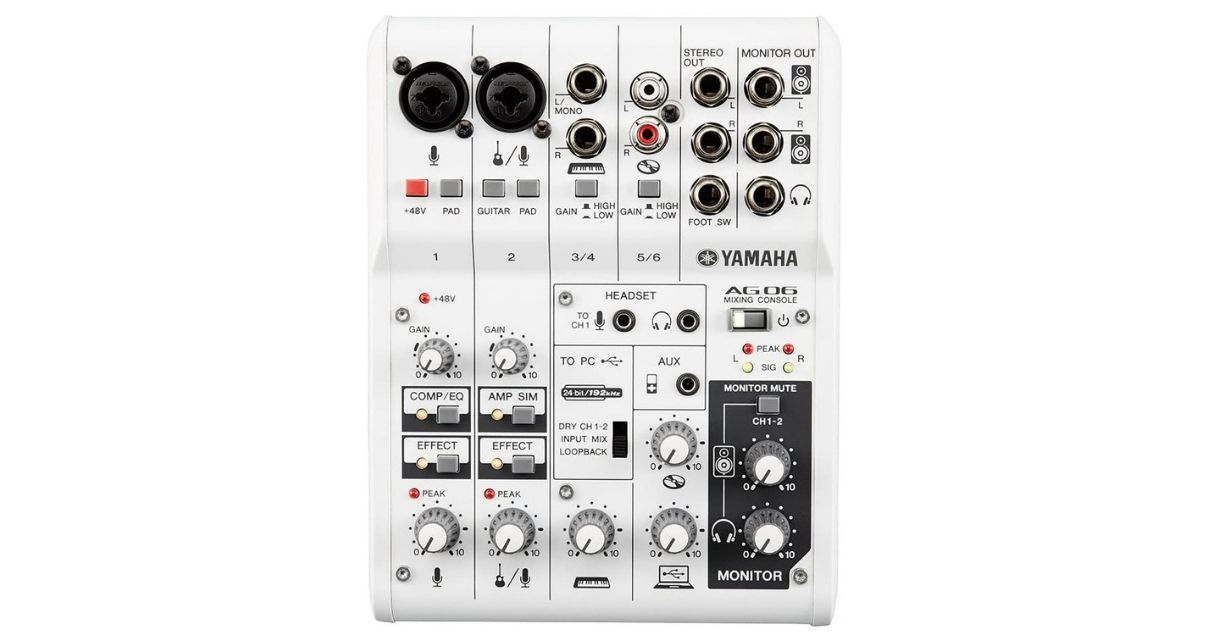
Notable for its small size and its feature set that is half mixer, half audio interface, the Yamaha AG06 is a six-channel mixer, USB-powered, that can mix a mic-only input, a single mono instrument, plus two stereo inputs, and send them all to a computer.
It has master, monitor and headphones outputs, easy loopback from the computer, and a built-in compressor on the mic channel, plus other unusual features like a headset mic input. A good choice for minimal set-ups that could also work well as a podcasting and livestreaming audio interface.
Channels – 6
On-board FX – Yes, very basic
External FX send – No
Audio interface – Yes
On-board recording – No
Launched – 2015
Price – $209/£133/€155
Also see: AG03
Presonus StudioLive AR8c
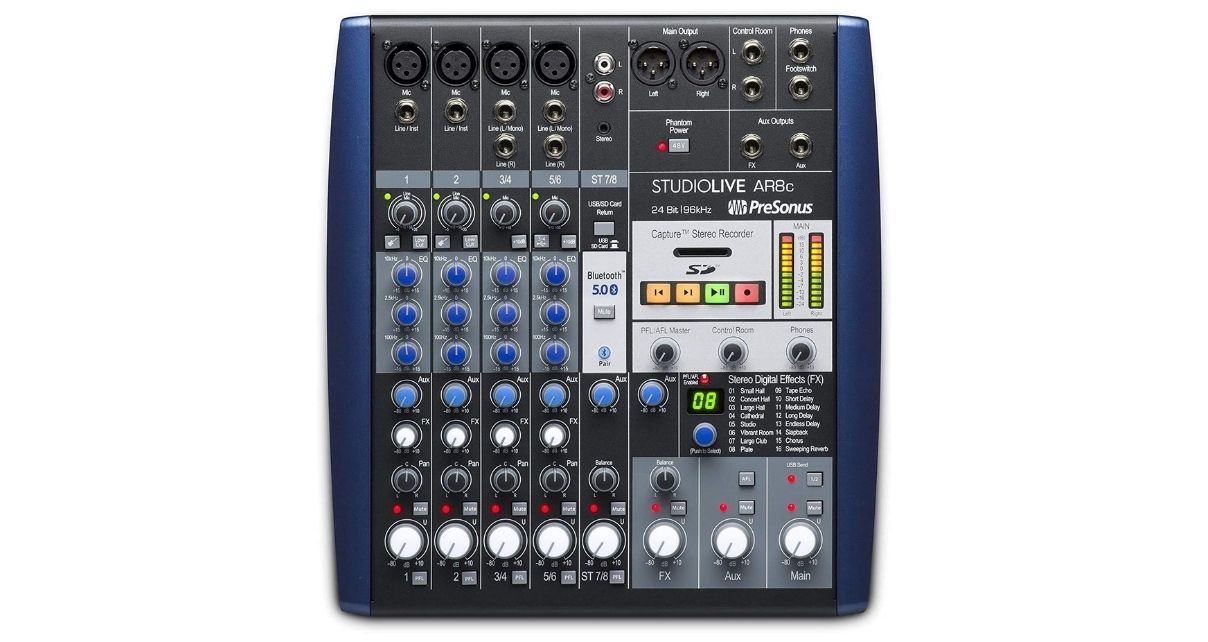
The big trick up the sleeve of this compact, useful little mixer is on-board stereo recording, direct to SD card. Apart from that it features a useful mix of channel types (two mic/line mono, two fully featured stereo, one EQ-less stereo).
Add in on-board FX, Aux and FX send, and a Bluetooth In option (great for jamming over a phone music source, for instance) and you have a little mixer that differentiates itself from the competition in a way that has won it many fans.
Channels – 8
On-board FX – Yes
External FX send – Yes
Audio interface – Yes
On-board recording – Yes
Launched – 2016
Price – $499/£329/€395
Also see – StudioLive AR12c, StudioLive AR16c
Tascam Model 12
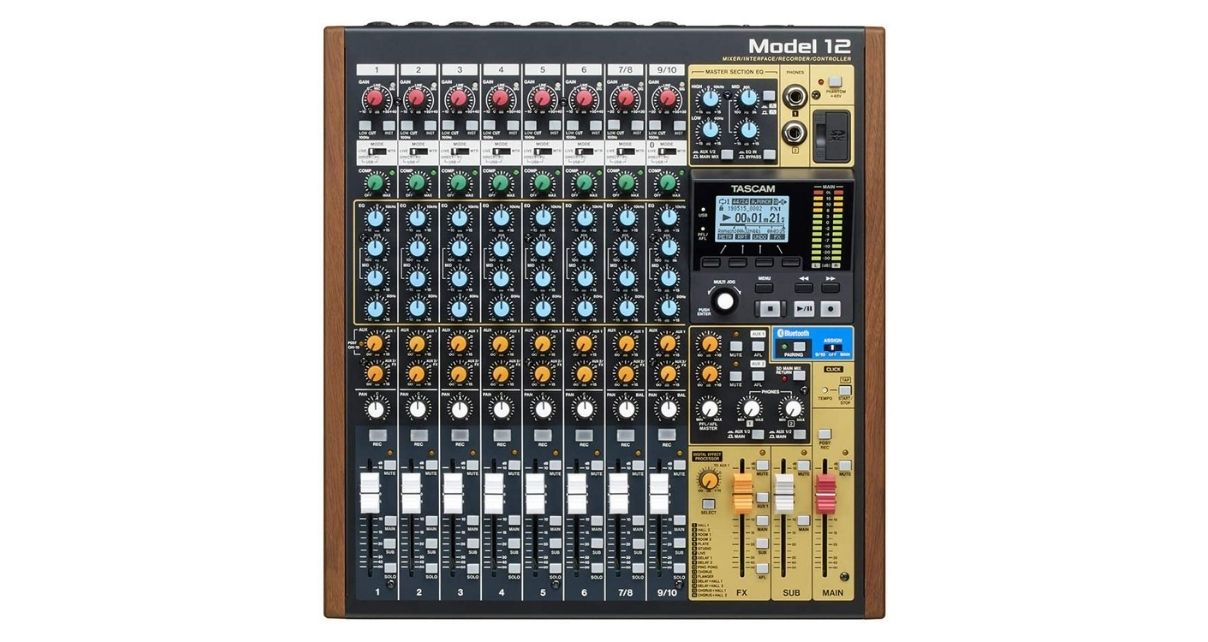
This is the most fully featured mixer in this list, and would be a good choice if you want the ultimate flexibility to work both DAW-less and with a DAW.
It has multi-channel on-board recording to USB, but also a multi-channel audio interface meaning you can record all 10 sources to your DAW, too. Speaking of DAWs, it has transport controls that work with Ableton Live, Logic Pro X etc and Midi in/out, too.
Add in decent on-board FX, one-knob compressors, EQs with tunable mids for the mono channels, great routing options and heavyweight build quality, if you’ve got space and want a mixer you’ll likely not outgrow any time soon, this is the one.
Channels – 10
On-board FX – Yes
External FX send – Yes
Audio interface – Yes
On-board recording – Yes
Launched – 2020
Price – $599/£529/€639
Also see – Model 16
Behringer Xenyx 802
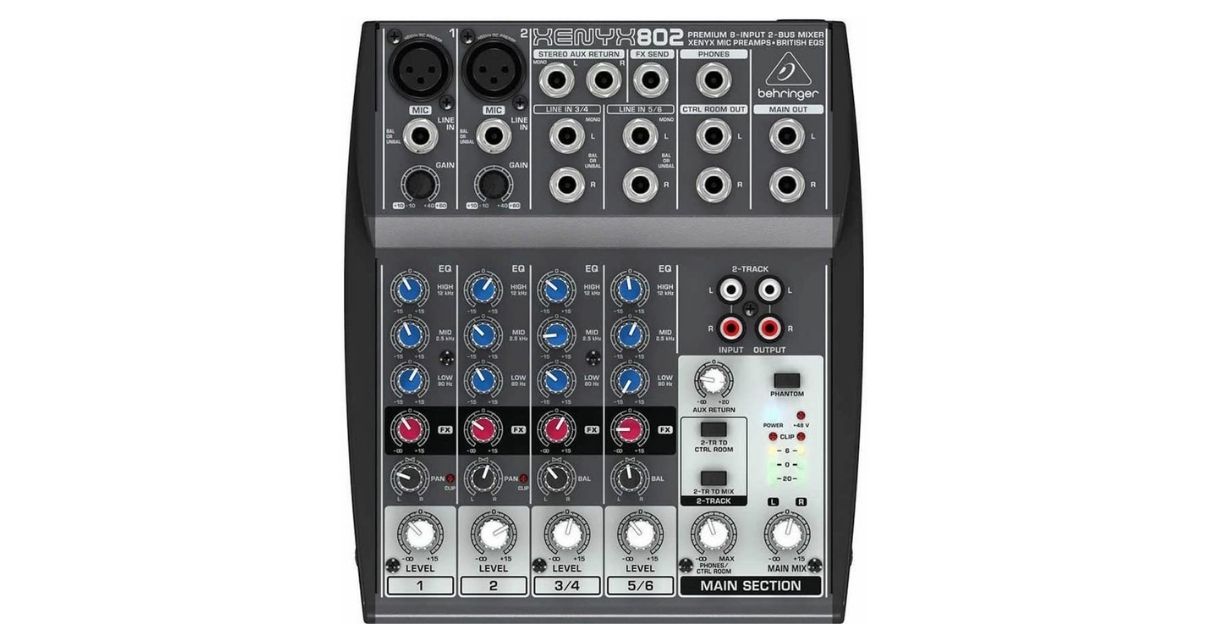
Behringer’s Xenyx mixers are compact and great value for money. They may not be the last word in audio quality or indeed build quality, but many users are extremely satisfied with them – and on a budget, they offer an awful lot.
The little Xenyx 802 might only have rotary volume controls, but it has two mono channels, two stereo channels, basic three-band EQ, and one post-fader FX send per channel for external FX devices, plus a stereo aux return, and multiple output routing possibilities.
Channels – 8
On-board FX – No
External FX send – Yes
Audio interface – No
On-board recording – No
Launched – 2001
Price – $59/£44/€53
Also See – Xenyx 1202, Xenyx 502
Zoom Livetrak L-12
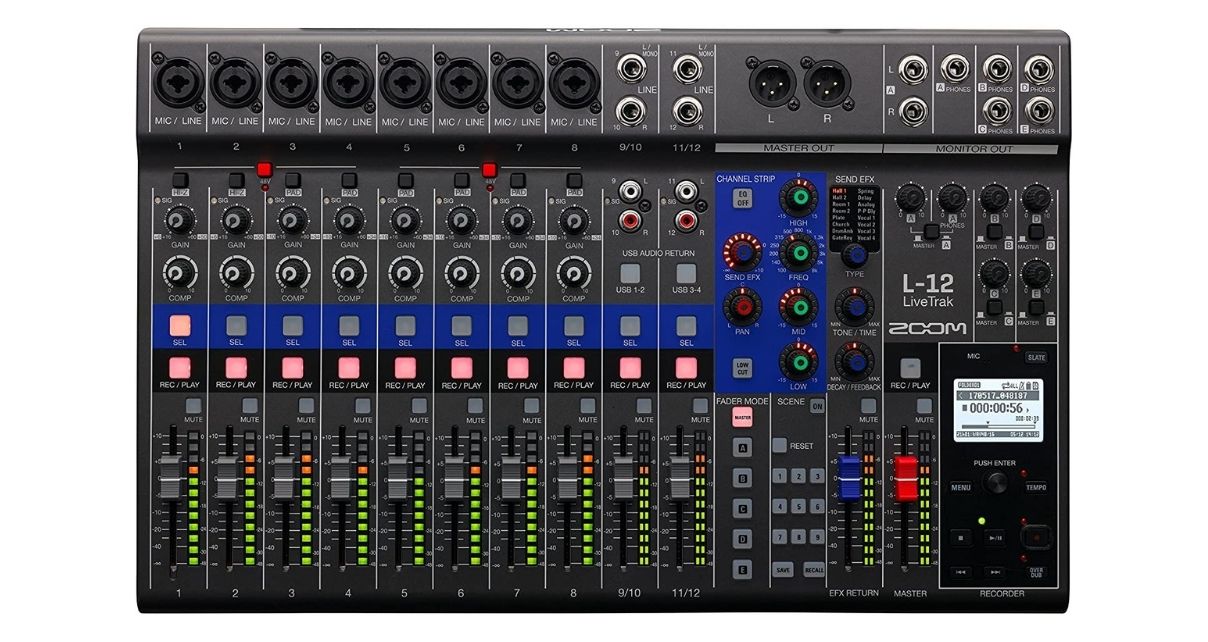
A rightly popular mixer/recorder, this one is wide and shallow in size, which may well suit many home studio producers better than many of the others. The mixer channels have three-band parametric EQ, and the eight mono channels have compression, with all channels having useful Mute buttons. You can record all 12 individual channels plus a stereo mix.
It has 16 onboard FX, a 14-in sound card, and you can save scenes. Unusual features apart from the recorder itself of course include a built-in mic for recording comments or talk-back, and even a metronome – plus there are all the usual lots of monitoring options.
Channels – 12
On-board FX – Yes
External FX send – No
Audio interface – Yes
On-board recording – Yes
Launched – 2017
Price – $649/£444/€525
Also see – Livetrak L-8
1010music Bluebox
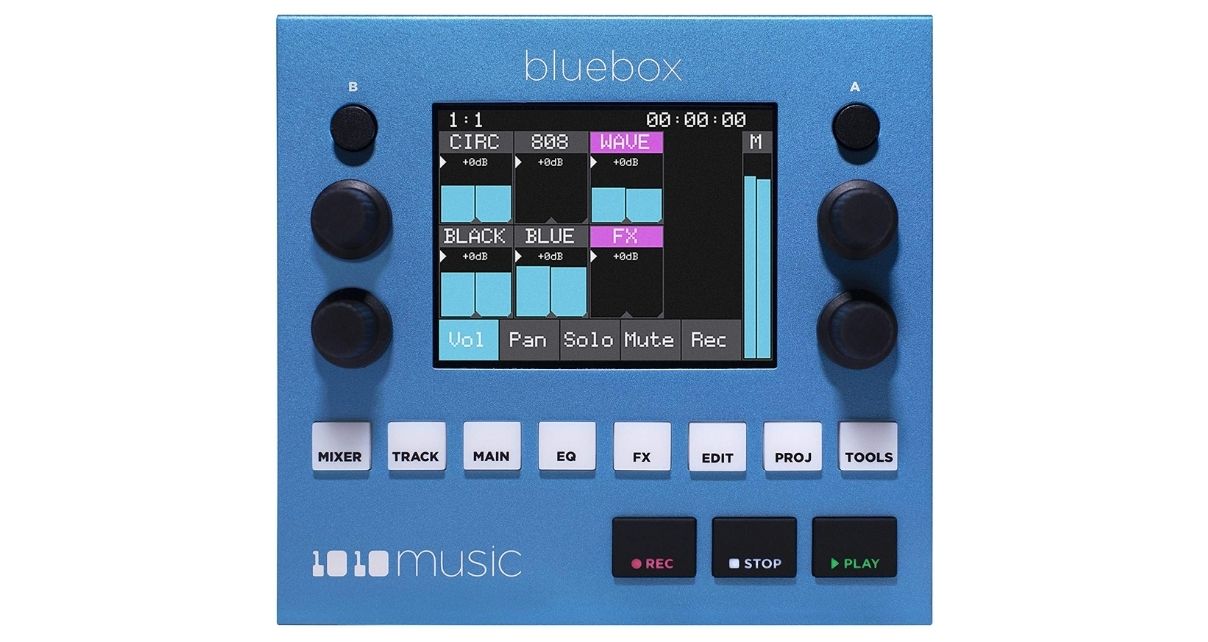
Something completely different to the other devices in this list, the 1010music Blue Box is a CD case-sized device with a central touchscreen and a number of buttons and knobs that’s both a mixer and a recorder (but note, not an audio interface).
It’s got 6 x stereo (switchable to 12 x mono) inputs, all with independent control for per-channel recording to and playback from micro SD card. Four-band parametric EQ per channel with low and high shelf cut, flexible output routing, on-board reverb and delay, global compressor, and Midi all make this a firmly electronic musician-aimed device, offering a refreshing and highly portable alternative to the more conventionally styled options in this roundup.
Channels – 12
On-board FX – Yes
External FX send: Yes
Audio interface – No
On-board recording – Yes
Launched – 2020
Price – $549/£444/€525
Finally…
As with any purchase when you’re building a modular, DAW-less production set-up, it pays to be careful when choosing a mixer, as you’re “stuck” with its features (or lack of). If you are a DJ and already have a DJ mixer or controller, it might make sense to try to use that at first, utilising extra inputs that you’re not using in your DJing.
Prefer to make music with a computer? Get the course: Dance Music Formula
It might also be worth looking to see if any of your existing gear can accept extra equipment as inputs – for instance, the Novation Circuit Tracks can work with two extra Midi instruments, acting as both sequencer and a basic mixer for those alongside its own built-in two synths and four-track drum machine/sampler.
Whatever you choose, we’d be interested to hear your reasons, and learn how you get on with your gear – so do let us know in the comments below.




